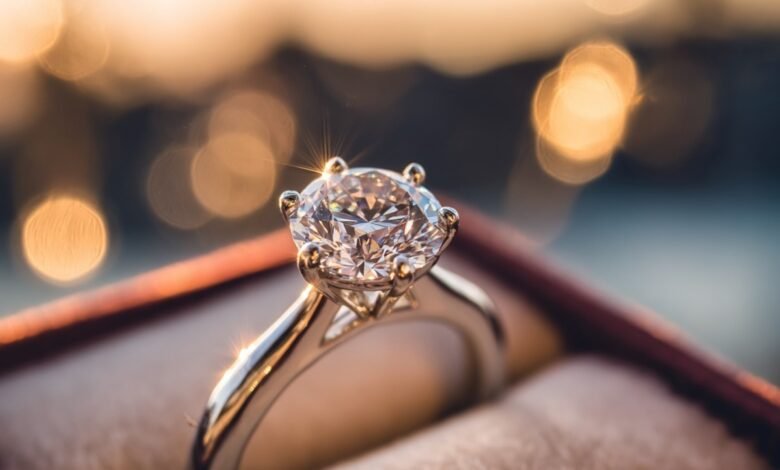
When it comes to engagement rings, the very first — and arguably most important — decision is style. This isn’t just about picking something shiny. It’s about choosing a piece that represents your partner’s taste, lifestyle, and personality. It’s a symbol of your unique love story, so it should feel like them the moment you see it.
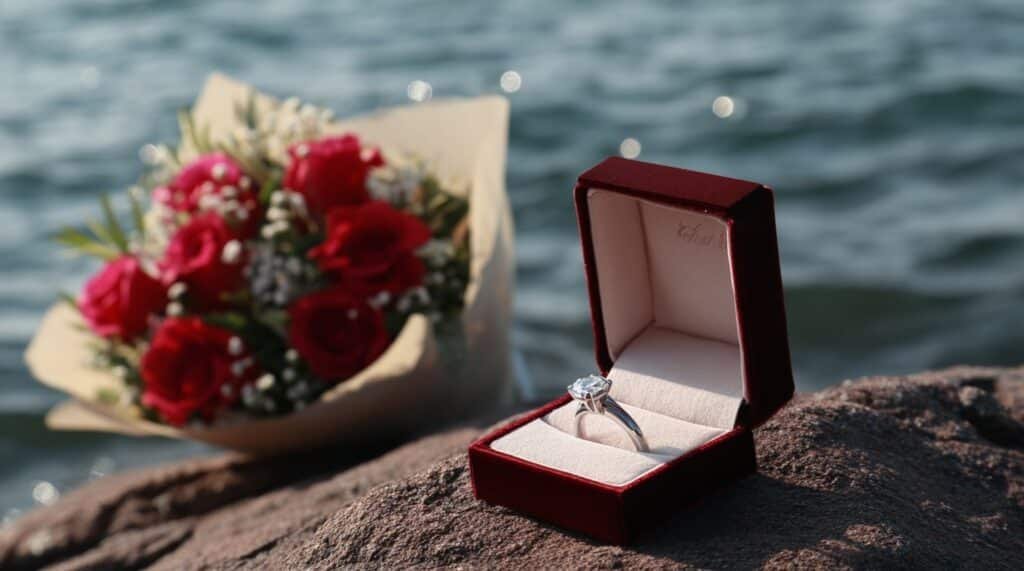
1. Discovering Your Ring Style: A Personal Journey
Let’s break it down. Start by observing what jewelry they already wear. Do they gravitate toward minimal, delicate pieces? That usually points to a love for clean, timeless designs — think solitaire settings or petite bands. Or maybe they prefer statement pieces with bold colors and textures, in which case a halo setting with colored gemstones could hit the right note.
Are they modern, vintage-loving, or into eco-conscious choices? A vintage-style ring with filigree details or a lab-grown diamond could speak volumes.
And don’t underestimate lifestyle. Someone with a hands-on job or active routine may need a setting that sits low on the finger and doesn’t snag — bezel or flush settings are ideal here. On the flip side, if your partner’s lifestyle allows for a little glamour, a prong setting with a raised diamond might be perfect.
A real-life example: One of my clients, a nurse, needed something durable and comfortable. She ended up choosing a bezel-set diamond with a smooth platinum band — stylish yet totally functional. Contrast that with a creative professional who wanted a sapphire center stone in a rose gold vintage setting — an artsy, colorful statement.
Bottom line? Don’t buy based on trends. Buy based on them. Think of this like designing a tattoo for someone else — it needs to feel like it belongs on their skin, every day, forever. Keep it personal, practical, and meaningful. Discover why Chisholm Hunter remains a top name in UK fine jewelry.
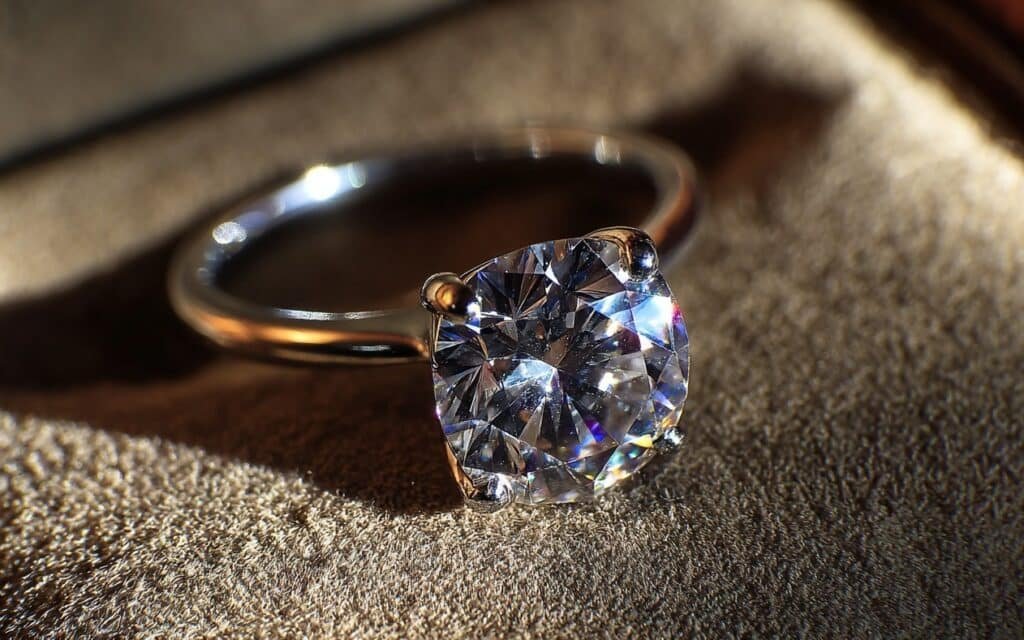
2. Diamond 101: The 4 Cs You Must Know
Choosing a diamond is where things get technical — but don’t worry, I’ll keep it simple. You’ve probably heard of the 4 Cs: Cut, Color, Clarity, and Carat. These are the standard benchmarks for evaluating a diamond’s quality and value. Let’s break them down.
• Cut
The cut determines how well the diamond reflects light. It’s the most important factor in how much your diamond sparkles. Even a flawless diamond will look dull if it’s poorly cut. Look for Excellent or Ideal cut grades.
• Color
Diamonds are graded on a scale from D (colorless) to Z (light yellow or brown). The less color, the higher the value. D–F is premium, but G–H offers a nearly colorless appearance for better value.
• Clarity
Clarity refers to the presence of inclusions (internal flaws) and blemishes (surface flaws). The scale ranges from Flawless (FL) to Included (I). Most diamonds have tiny imperfections — but unless you’re using a microscope, you probably won’t notice anything from VS1 to SI1.
• Carat
This measures weight, not size. A 1-carat diamond might appear larger or smaller depending on its cut. Bigger isn’t always better — balance size with quality.
Here’s a pro tip: Focus more on cut and appearance than chasing the highest numbers in every category. A 0.90-carat diamond with an ideal cut often looks better (and costs less) than a 1-carat with poor proportions.
And don’t forget alternatives! Lab-grown diamonds offer identical sparkle at a fraction of the cost. Or go unique with sapphires, emeralds, or moissanite — all stunning in their own right.
Remember, it’s not about ticking boxes. It’s about finding the stone that speaks to your heart — and fits your budget. Vintage Ring Boxes
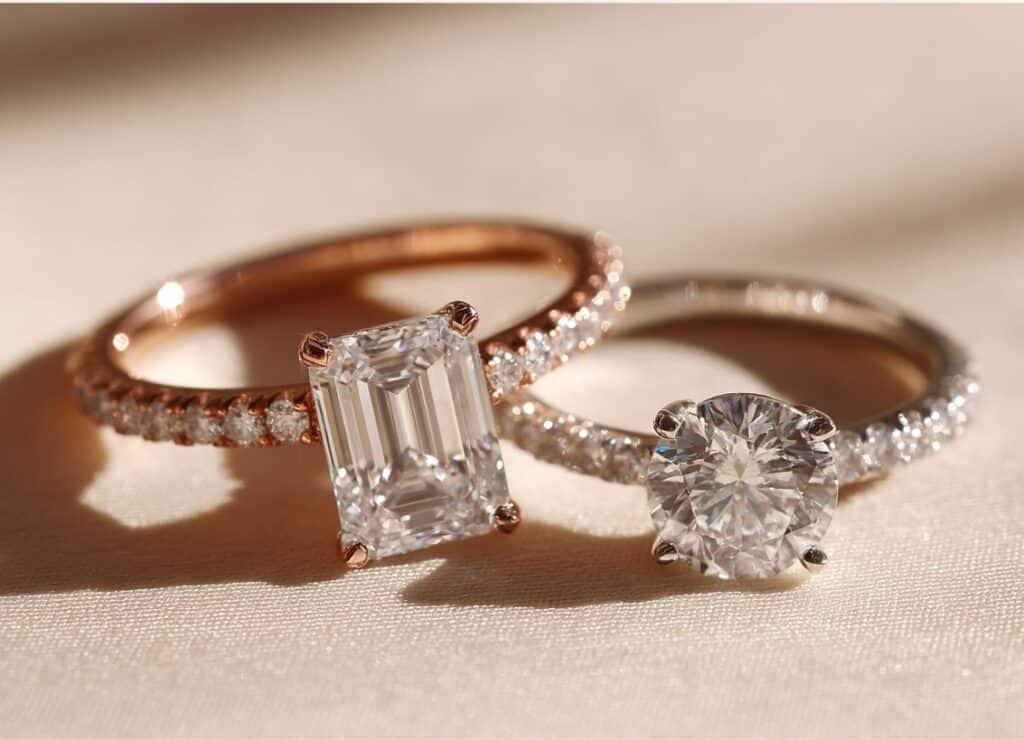
3. Choosing the Right Metal: More Than Just Color
The metal you choose for your engagement ring is more than just the frame — it affects durability, comfort, and how the ring ages over time. Think of it like picking the right canvas for your masterpiece. Here are the most popular options:
• Yellow Gold
Warm and classic. Pairs beautifully with vintage settings and looks great on warm skin tones. It’s soft, so may scratch easier than other metals.
• White Gold
Modern and versatile. Made by alloying gold with white metals and plated with rhodium for that bright finish. Needs re-plating every few years but looks amazing with diamonds.
• Rose Gold
Romantic and trendy. The copper in this alloy gives it a pink hue. It’s strong and surprisingly flattering on all skin tones.
• Platinum
The most durable and hypoallergenic metal. Naturally white and won’t fade over time. It’s heavier (some love that!) and more expensive than gold.
Here’s the trick: Match the metal to your partner’s daily wear. If they mostly wear silver-toned jewelry, go for white gold or platinum. If they love warmer tones, rose or yellow gold is the way.
Also, think long-term. Platinum holds up better over decades, while white gold will need upkeep. Rose gold can develop a rich patina — which some find charming, others not so much.
Still unsure? Mix metals! Two-tone rings are trending and can solve the “gold vs. silver” dilemma with stylish balance.
Your setting should also match the metal — a delicate band works well in gold; bold cathedral settings might benefit from the strength of platinum.
Let your lifestyle, aesthetic, and budget guide your metal choice. This foundation affects not just how the ring looks, but how it lives with you.
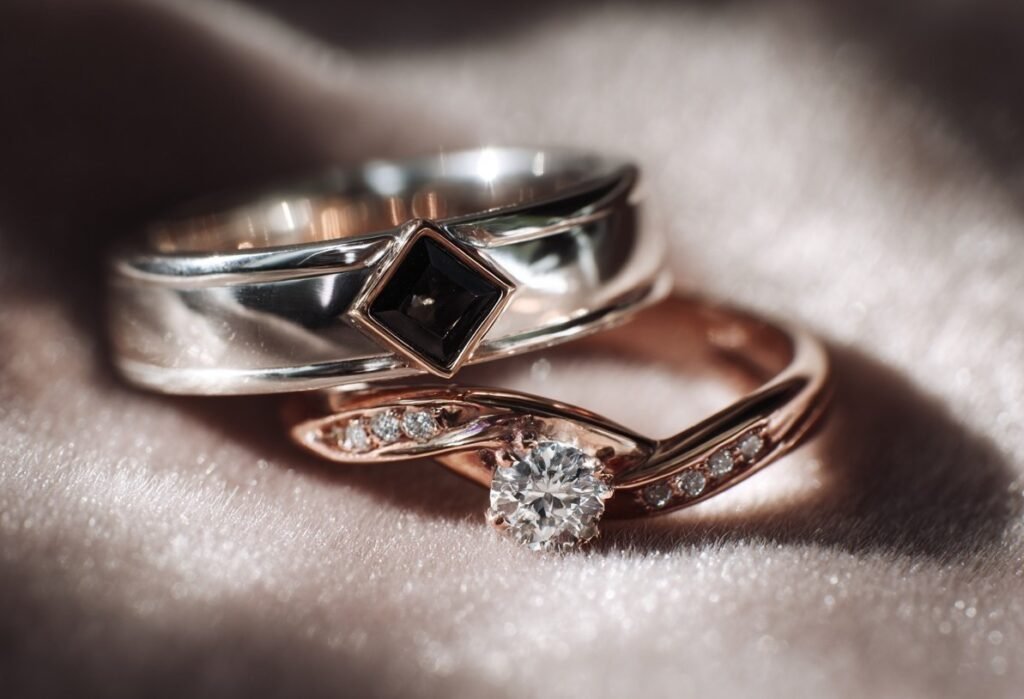
4. Smart Budgeting: Getting Value Without Compromise
Let’s bust a myth: You don’t need to spend three months’ salary on an engagement ring. That old guideline? It was invented by marketers, not financial advisors.
The truth is, you should spend what feels right for you. Here’s how to budget smart — and still get a stunning ring.
Step 1: Set a Comfortable Limit
Start with what you can actually afford without debt. Think of it like buying a car or booking a vacation — it’s an investment, but not worth financial stress.
Step 2: Prioritize Your Must-Haves
What matters most to you — carat weight, diamond quality, metal, or design? Decide where to spend more, and where to compromise.
Example: Instead of a 1-carat natural diamond, consider a 0.90-carat lab-grown with better cut and clarity. Looks better and costs less.
Step 3: Explore Alternatives
Moissanite, sapphires, and lab-grown diamonds offer major sparkle for less money. Vintage rings can also be more affordable and one-of-a-kind.
Step 4: Think Lifetime Value
Will the ring need maintenance? Does it come with warranty or insurance options? These long-term costs matter too.
A client of mine once said: “I want her to be wowed, but I don’t want to start our marriage in credit card debt.” We found a stunning lab-grown oval diamond with a halo setting for under $2,500 — she cried happy tears. That’s value.
Bottom line: An engagement ring should be a joyful purchase — not a financial burden. There’s a perfect ring for every budget, and smart shoppers know how to find it.
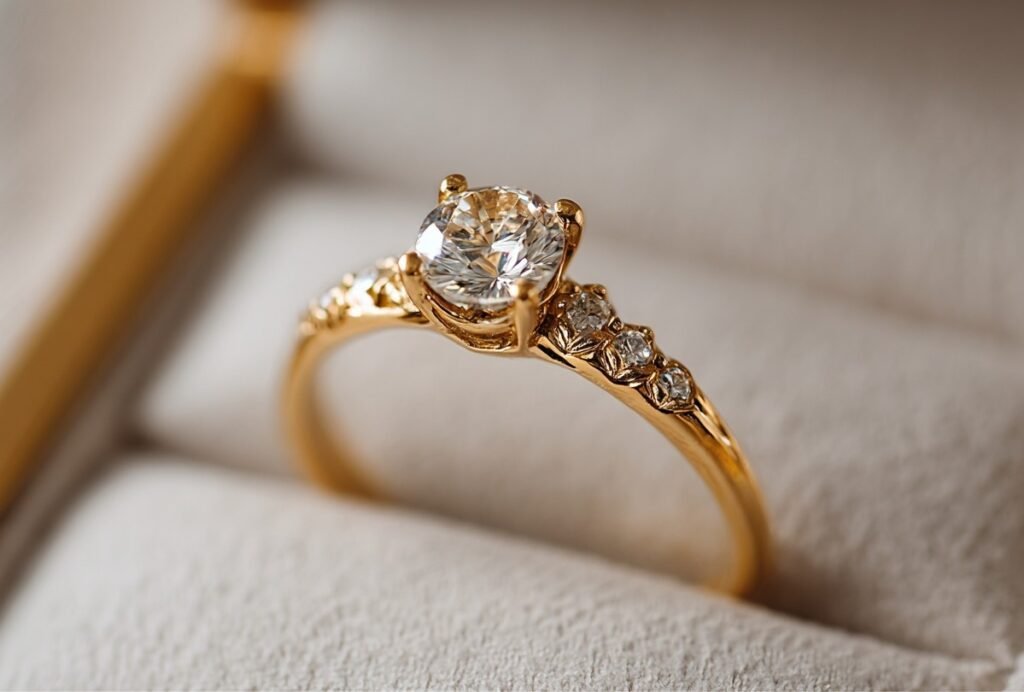
5. Finding the Right Ring Size (Without Ruining the Surprise)
Ring sizing can feel like a secret mission — especially if you’re planning a surprise proposal. Too small, and it won’t go on. Too big, and it could slip off. But don’t panic — there are plenty of ways to get it right.
Stealthy Sizing Tricks:
- Borrow a ring they already wear on the ring finger — but make sure it’s from the correct hand!
- Ask a close friend or family member — they might already know the size.
- Trace a ring onto paper and bring it to a jeweler.
- Use online printable sizing tools from reputable jewelers.
- Go ring shopping “for fun” and casually find out the size.
Still unsure? Propose with a temporary “placeholder” ring, then shop together. Many couples actually love this approach — it lets the partner choose the final design, and guarantees the perfect fit.
And yes, resizing is usually possible — especially for gold, platinum, or silver rings. Avoid hard-to-resize metals like tungsten or titanium if you’re unsure of the size.
Quick tip: Our fingers change size throughout the day. The best time to measure is midday, at room temperature.
I’ve seen many happy couples who needed a post-proposal resize. Trust me — the moment matters more than a perfect fit on Day 1. What counts is choosing a ring that lasts a lifetime. Minimalist engagement ring
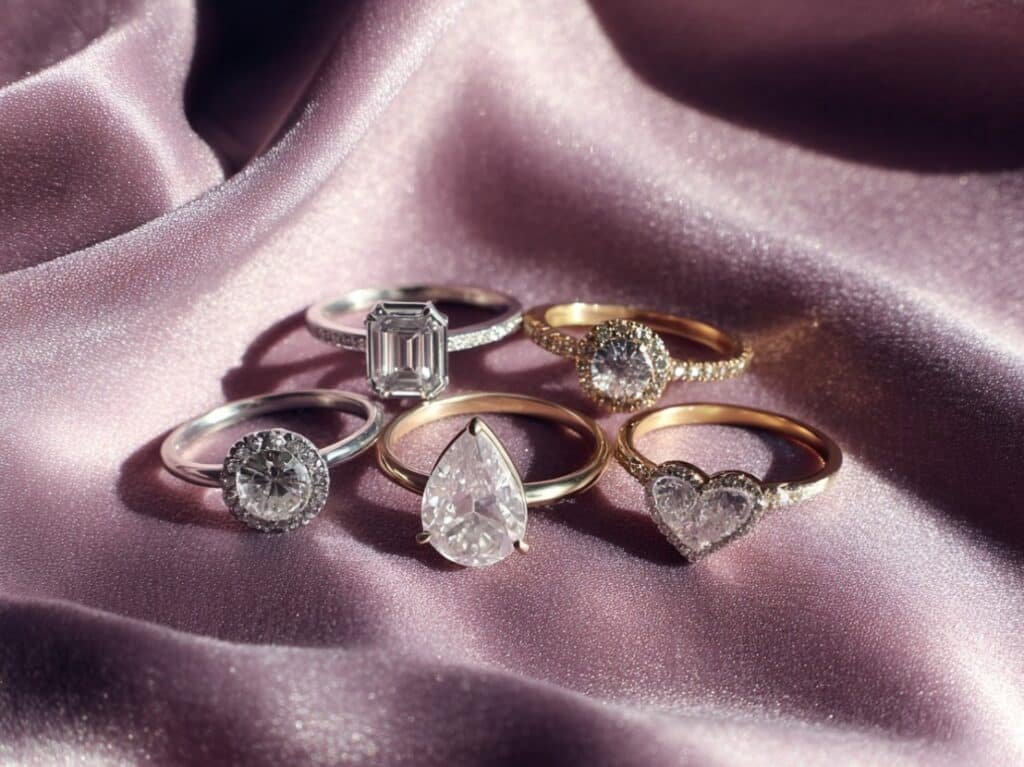
6. Ring Settings Explained: How the Stone Is Framed Matters
When most people think of engagement rings, their minds go straight to the diamond. But here’s the secret: the setting — how the diamond is mounted — can make or break the entire look and feel of the ring. Think of it like the outfit around the star of the show.
Common Ring Settings You Should Know:
- Solitaire: The most classic and minimalist setting — a single stone on a plain band. Timeless, elegant, and all about that central diamond.
- Halo: A center stone surrounded by tiny diamonds, giving a sparkling “halo” effect. It enhances size and brilliance — perfect for extra dazzle.
- Pavé: A band encrusted with small diamonds, adding subtle shine from every angle. Works beautifully with other settings for added glam.
- Bezel: The metal completely encircles the diamond. Sleek, modern, and ultra-secure — great for active lifestyles.
- Three-Stone: One center stone flanked by two smaller gems. Symbolizes past, present, and future — ideal for sentimental types.
- Cathedral: The band arches upward toward the center stone like cathedral spires. It gives height and drama, without a bulky look.
- Tension: The stone appears suspended between the ends of the band. A futuristic, minimalist choice — though less common.
Which One Should You Choose?
It depends on lifestyle, taste, and how much sparkle your partner likes. A solitaire is timeless, but some may find it too plain. A halo gives major sparkle but may require more maintenance. Bezel settings are great for those who work with their hands. Think about practicality as well as appearance.
One of my clients, an architect, went with a clean bezel setting because she used her hands constantly — the stone stayed protected, and the ring looked ultra-modern. Meanwhile, a teacher chose a cathedral setting with a pavé band for just the right touch of sparkle that wouldn’t catch on anything.
Pro tip: Choose the setting after the stone. Not every setting fits every diamond shape. If you already have a particular cut in mind (like an oval or emerald), ask your jeweler which settings complement it best.
Ultimately, the setting helps tell your love story. Do you want it bold and dramatic? Soft and romantic? Clean and modern? Let the setting reflect not just the stone — but your shared vibe.
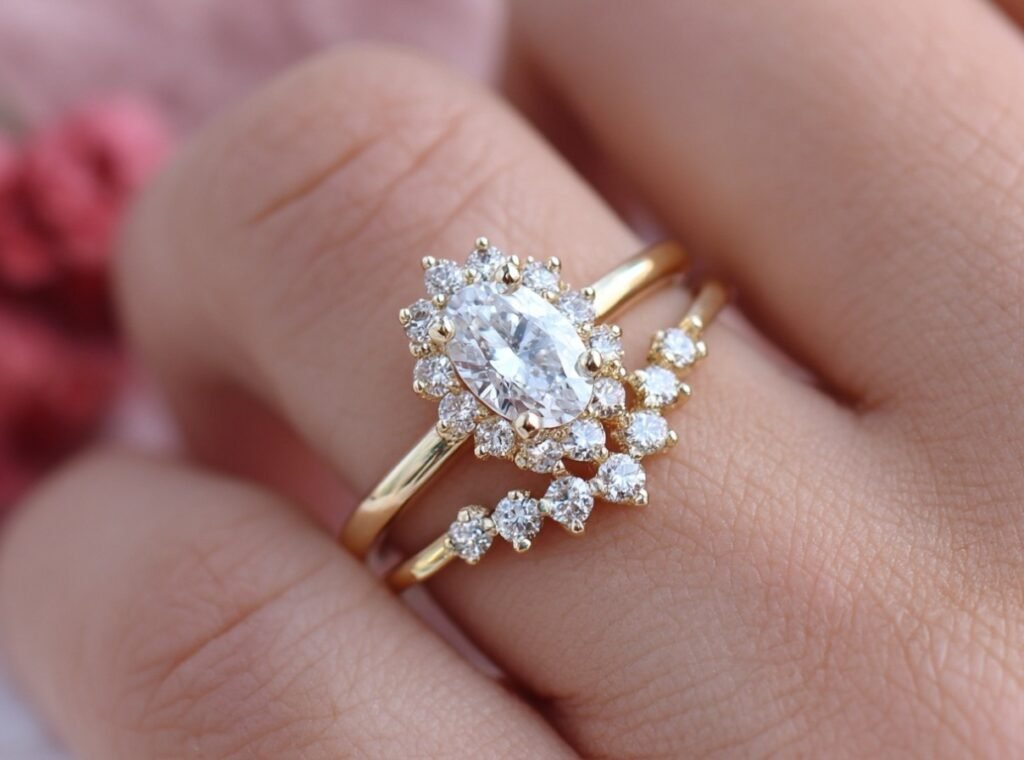
7. Engagement Ring Shapes and What They Say
Diamonds don’t just come in round — they come in styles, moods, and even personalities. The shape of your engagement ring stone can say a lot about the wearer, and choosing the right one is part of making it feel perfect.
The Most Popular Diamond Shapes:
- Round: The classic, most brilliant cut. Perfect for traditional elegance. It reflects light best and fits every setting.
- Oval: A modern twist with the same sparkle as round, but with a longer, finger-elongating silhouette.
- Princess: Square with sharp corners. Chic and bold — ideal for someone who loves clean lines.
- Emerald: Rectangular with step-cut facets. Understated and glamorous, perfect for vintage fans or old-Hollywood style lovers.
- Cushion: Rounded-square shape with soft edges. Romantic and classic, with a pillowy sparkle.
- Pear: Teardrop shape that’s unique and feminine. Often worn with the point facing the nail.
- Marquise: Elongated with pointed ends. Regal and dramatic, giving maximum size for carat weight.
- Asscher: Like emerald but square. Art deco vibes, perfect for vintage or retro-lovers.
- Radiant: Rectangular like emerald, but with brilliant facets for more sparkle.
- Heart: Symbolic, sweet, and rare — for the true romantic.
Each shape has its own sparkle pattern, personality, and practical considerations. For instance, marquise and pear shapes can make the diamond look bigger, but they’re more prone to chipping if not properly protected. Round is the safest bet for durability and resale value.
So what shape is right for your partner?
If they love timeless fashion, a round or cushion cut might suit them. If they’re edgy and bold, try a princess or pear. Vintage lovers? Go for emerald, Asscher, or marquise. And don’t be afraid to break the mold — a heart-shaped diamond might not be traditional, but it can be absolutely breathtaking if it fits their style.
When in doubt, observe. Look at their Pinterest boards, note their style, or take a peek at their jewelry box. You’ll find clues that point you in the right direction.
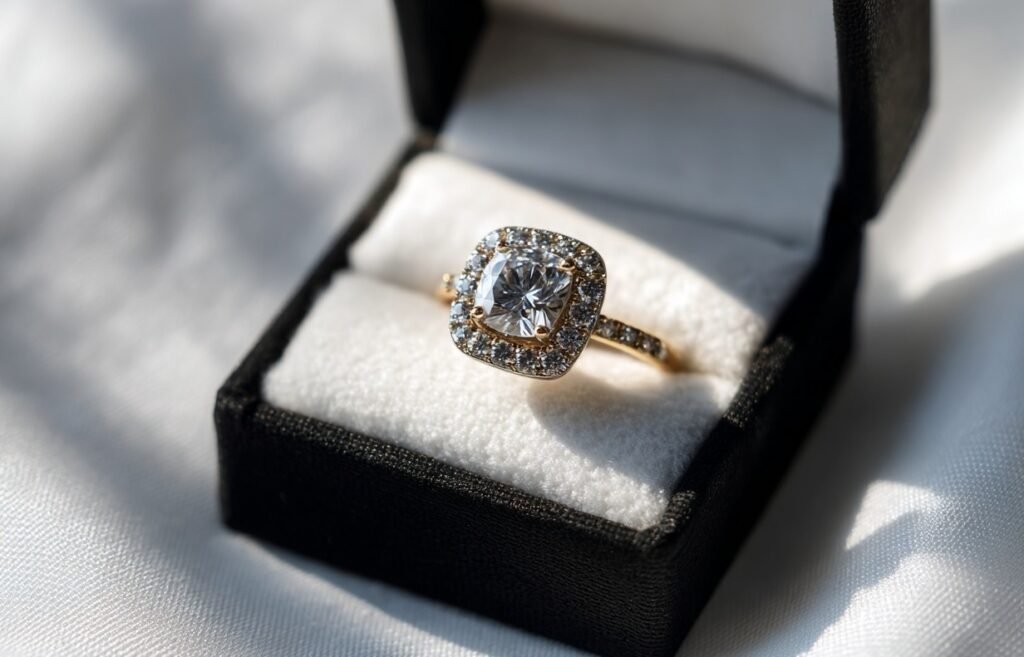
8. Trending Engagement Ring Styles in 2025
Each year, engagement ring trends evolve — and 2025 is full of beautiful, meaningful, and eco-conscious designs. Whether you’re a trend-follower or just curious, here’s what’s hot right now.
🌟 Top Engagement Ring Trends for 2025:
- Colored Gemstones: Sapphires, emeralds, and even pink diamonds are being chosen over traditional whites. Personal and bold.
- Lab-Grown Diamonds: Affordable, ethical, and nearly indistinguishable from mined diamonds. Huge with Gen Z and millennials.
- Toi et Moi Rings: Two stones side-by-side — symbolizing two souls becoming one. Worn by celebs like Ariana Grande.
- East-West Settings: Turning oval, marquise, or emerald stones sideways for a fresh, horizontal look.
- Minimalist Bands: Thin, delicate rings with whisper-thin bands and bezel settings — sleek and modern.
- Vintage Revivals: Art deco, Edwardian, and Victorian-era rings are back. Think engraved bands and halo details.
- Chunky Gold: Thick, bold yellow gold bands with subtle sparkle — a return to ‘70s-style glam.
- Custom Hidden Details: Secret initials, birthstones, or messages hidden inside the band — a trend that adds meaning.
Trends shouldn’t dictate your final decision, but they can inspire it. If your partner loves modern aesthetics, a lab-grown emerald-cut diamond in a thin East-West setting could be a showstopper. More sentimental? Try a vintage-inspired ring with hand-engraved details and heirloom vibes.
One couple I worked with designed a Toi et Moi ring with a sapphire for her birth month and a diamond for his. It was deeply personal — and stunning.
The real magic of following trends? It gives you ideas you may not have considered. Just make sure the ring you choose today is something they’ll love forever.
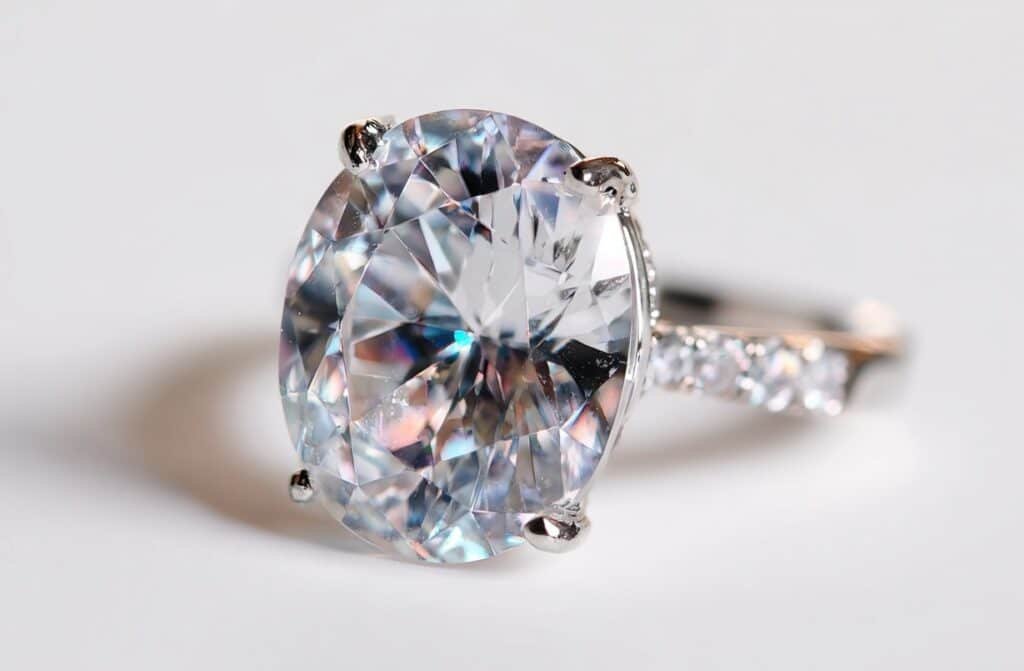
9. Engagement Ring Buying Checklist: Don’t Miss a Step
Feeling overwhelmed? Don’t worry — buying an engagement ring is a big decision, but it doesn’t have to be stressful. Here’s a step-by-step checklist to help you stay on track:
✅ Engagement Ring Buying Checklist
- Set your budget
Know what you’re comfortable spending before you start browsing. - Learn about the 4 Cs
Cut, Color, Clarity, and Carat — understand what matters most to you. - Choose the metal
Yellow gold, white gold, platinum, or rose gold — pick what suits their style. - Pick a stone shape
Round, oval, emerald, princess — let their style guide you. - Decide on the setting
Solitaire, halo, pavé, bezel — choose based on lifestyle and taste. - Find their ring size
Use stealthy tricks or measure directly if shopping together. - Decide natural vs. lab-grown
Both are real diamonds — it’s all about values and budget. - Look at certifications
Always ask for GIA, IGI, or AGS certification. - Explore customization options
Engraving, hidden gems, or unique settings make it special. - Plan the proposal
Once the ring is in hand — make the moment unforgettable.
Review Summary:
This list ensures you don’t miss anything essential — from budget to bling. Whether you’re buying solo or together, it helps keep your emotions and your wallet balanced.
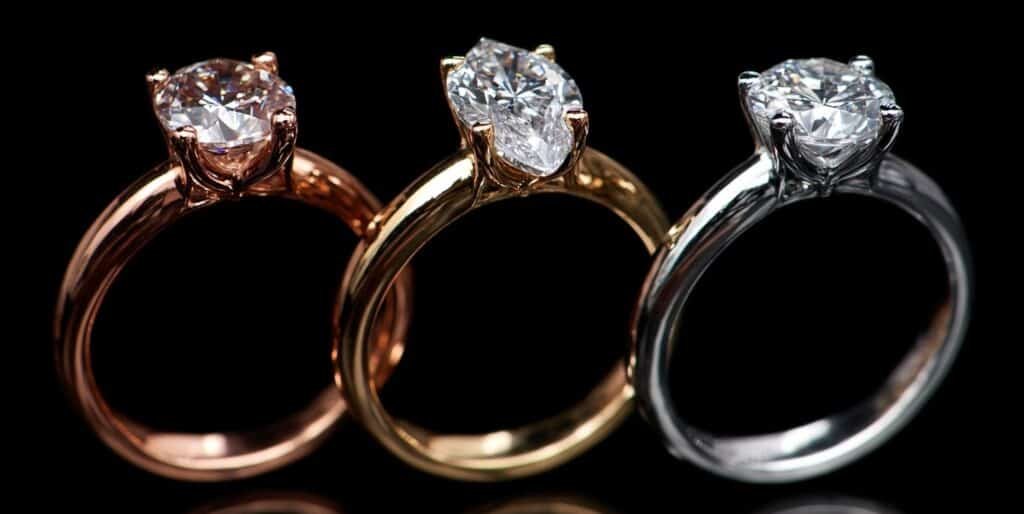
10. Custom vs. Ready-Made: What’s Right for You?
This is one of the most common questions I get: Should I design a custom ring or buy one off the shelf? The answer depends on time, budget, and how personal you want it to be.
Custom Rings:
Pros:
- Uniquely yours: Every detail can reflect your story.
- Perfect fit: Tailored to your partner’s exact taste and hand.
- Emotional value: Extra special because you helped create it.
Cons:
- Takes time: Custom rings can take 4–8 weeks (sometimes longer).
- Can be pricier: Custom labor and design may cost more.
- Less return flexibility: Made for you = harder to return.
Ready-Made Rings:
Pros:
- Immediate: Walk in, walk out with the ring.
- More predictable: What you see is what you get.
- Often more affordable: Mass-produced = less labor.
Cons:
- Less personal: May not be one-of-a-kind.
- Limited design options: You may have to compromise.
One groom I worked with chose a ready-made ring with a stunning round solitaire — and she loved it. Another spent two months designing a ring with hidden initials and her grandmother’s sapphire — and she cried when she saw it.
Here’s my advice: If time is short and you’re unsure about exact preferences, choose a beautiful ready-made ring with room to customize later. If you’ve got a clear vision and time to spare, a custom ring can be a lifelong treasure.
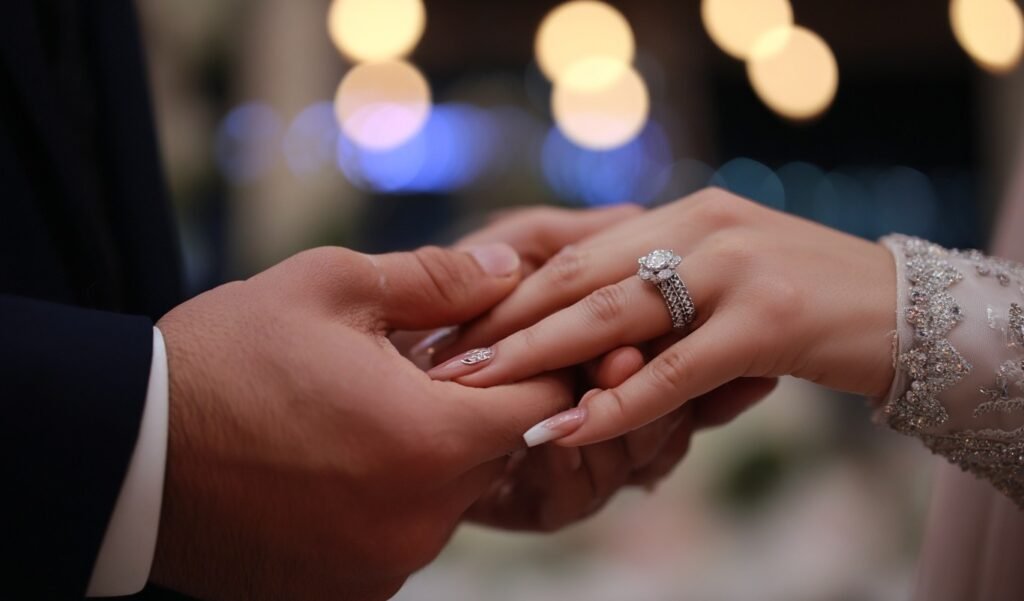
11. Ethical Engagement Rings: A Conscious Choice
Today, more and more couples are asking an important question: “Where did this diamond come from?” If you or your partner care about sustainability, human rights, and ethical sourcing, you’re not alone. Choosing an ethical engagement ring is a growing trend — and a responsible one.
What Makes a Ring Ethical?
- Conflict-Free Diamonds
These are diamonds not linked to violence, human exploitation, or war. Look for stones certified by the Kimberley Process, which aims to eliminate blood diamonds from the market. - Lab-Grown Diamonds
A sustainable, ethical alternative to mined diamonds. Identical in appearance and structure, lab-grown diamonds are cruelty-free and leave a significantly smaller environmental footprint. - Recycled Metals
Many jewelers now use recycled gold or platinum to reduce environmental impact. It’s the same high-quality metal — just repurposed. - Vintage or Antique Rings
Buying a pre-owned ring is the ultimate sustainable choice. It’s also incredibly romantic — imagine giving a piece of history new life. - Certified Ethical Jewelers
Look for jewelers who follow fair trade practices, use transparent sourcing, and pay fair wages.
Some respected brands even trace every step of the diamond’s journey — from mine or lab to your hand. If your values include environmental care or human rights, choosing an ethical engagement ring is a beautiful way to honor them.
For example, I once worked with a couple who picked a vintage Art Deco ring from the 1920s. It was full of character, came with a story, and aligned with their belief in sustainability. It was perfect — not just for her finger, but for their hearts.
Being conscious doesn’t mean compromising on beauty. In fact, knowing your ring did good in the world makes it shine even brighter.
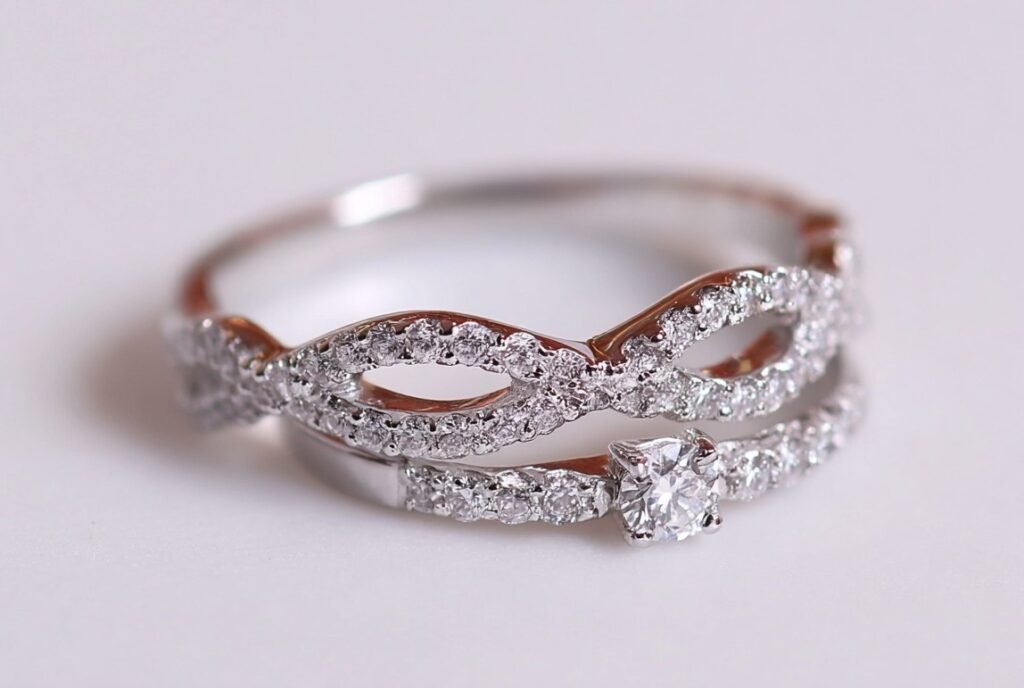
12. Engagement Ring Insurance: Is It Worth It?
You wouldn’t buy a car without insurance, right? So why invest in a $2,000 to $20,000+ ring — and not protect it? Engagement ring insurance may not sound romantic, but it’s one of the smartest moves you can make.
Why You Should Insure It
Rings get lost. They get stolen. Stones fall out. Accidents happen. And let’s be honest — a ring this meaningful deserves backup.
Most people insure through:
- Homeowner’s or renter’s policy add-ons
- Standalone jewelry insurance providers
What Does It Cover?
- Theft or loss
- Accidental damage (like a chipped diamond)
- Mysterious disappearance
- Repairs or stone replacements
You’ll need:
- A recent appraisal (your jeweler can provide this)
- A certificate for the stone (like GIA)
- Proof of purchase
The cost? Usually 1–2% of the ring’s value per year. So a $5,000 ring might cost around $50–$100/year to insure — peace of mind for pennies a day.
A client once had their custom ring stolen on vacation. Thankfully, they had it insured — and the company covered a full remake, including the original diamond specs. Without insurance, it would’ve been a heartbreaking (and expensive) loss.
Tip: Insure the ring as soon as you buy it — not after the proposal.
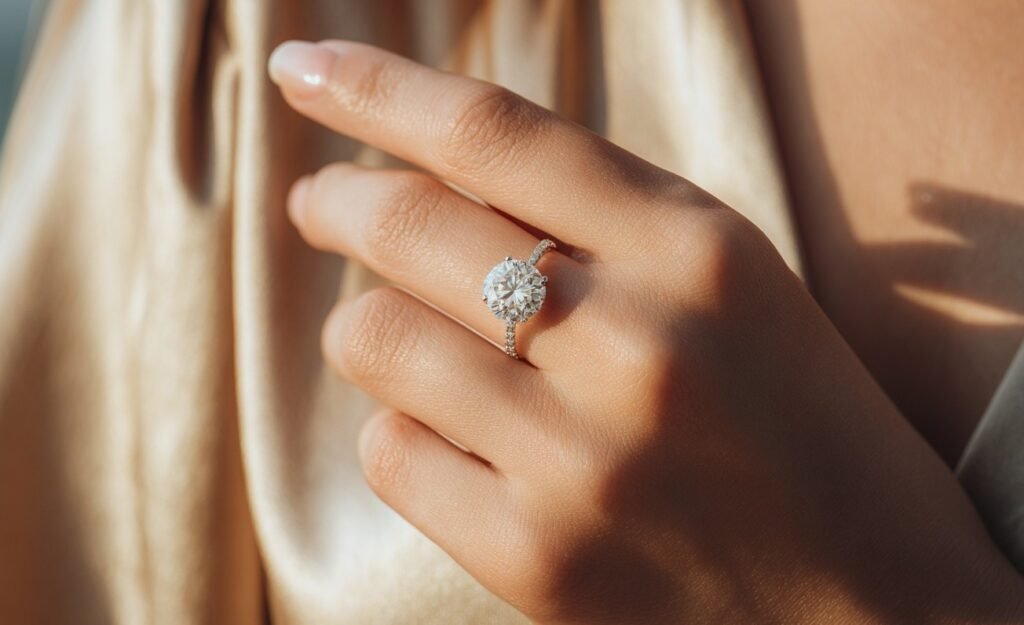
13. Engagement Ring Maintenance: Keep the Sparkle Alive
An engagement ring is forever — but only if you take care of it. Like anything valuable, it needs maintenance to keep it beautiful and secure.
How to Care for Your Ring:
- Clean it regularly
Soap, lotion, and everyday grime dull the shine. Use warm water, mild dish soap, and a soft brush every few weeks. - Take it off sometimes
Avoid wearing it during workouts, gardening, cleaning, or swimming. Chemicals and hard surfaces are the enemy of sparkle. - Get professional cleanings
Jewelers often offer complimentary cleaning and inspection. Aim for twice a year. - Inspect prongs and settings
A loose prong can mean a lost diamond. Check for wobbling stones and take it in if anything feels off. - Store it safely
When not wearing the ring, place it in a soft-lined jewelry box — away from other pieces that might scratch it.
Think of it like this: You wouldn’t drive your car forever without an oil change. Your engagement ring is the same. A little upkeep goes a long way.
A friend once ignored a loose setting, thinking, “I’ll take it in later.” Two weeks later, the center stone was gone. Lesson learned the hard way.
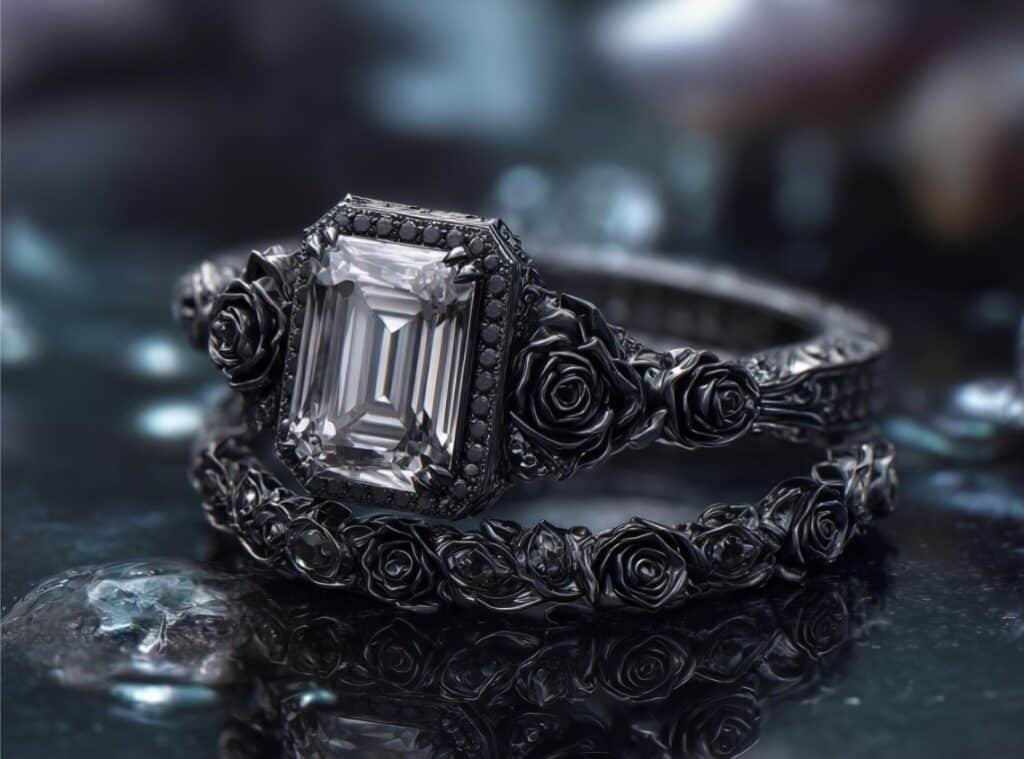
14. How to Propose with the Ring (And Make It Unforgettable)
Once you’ve picked the perfect engagement ring — it’s go time. The proposal is where memory meets magic. And yes, the ring plays a starring role, but how you present it can make it legendary.
Tips for an Unforgettable Proposal:
- Know their vibe
Private? Public? Romantic or casual? Propose in a way that feels authentic to your relationship. - Pick a meaningful location
First date spot, vacation, your home, or a new adventure destination. - Practice what you’ll say
You don’t need a speech, just sincere words. Speak from the heart. - Capture the moment
Hire a photographer or set up a camera. You’ll thank yourself later. - Involve loved ones (or not)
Some want family there. Others want it to be just you two. Respect their preference. - Don’t forget the box
That ring box moment is iconic. Choose a stylish one — or get a slim box if you’re sneaking it into a pocket.
Real story: A client proposed with a scavenger hunt around their city, ending in the park where they first kissed. At the final clue — he pulled out the ring. Cue tears, laughter, and a very loud “YES!”
The ring is important, but the love behind it is what they’ll remember forever. Make it personal. Make it yours.
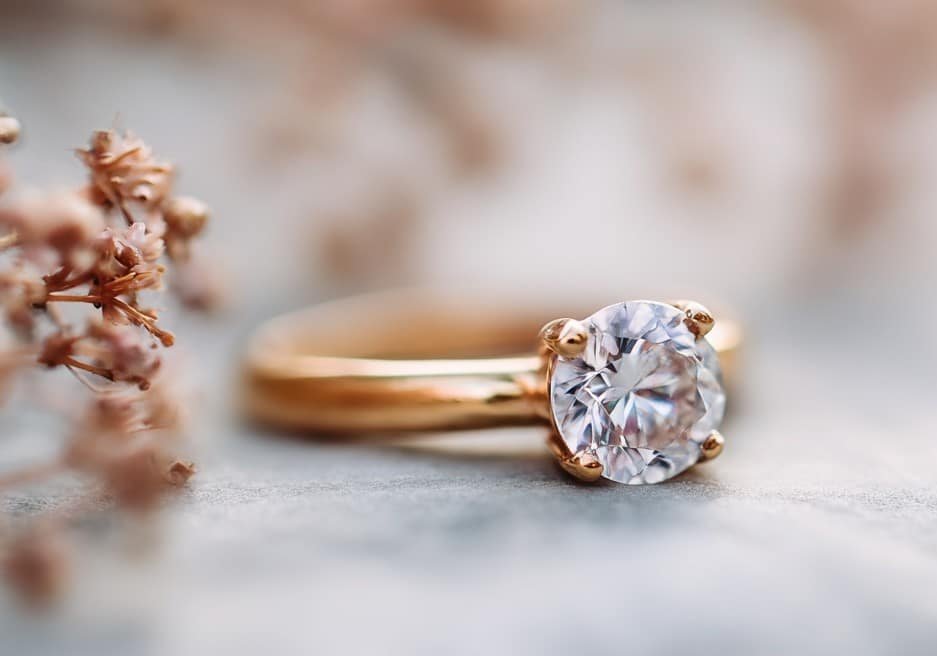
15. Matching the Wedding Band: Plan for the Future
After the “yes” comes the next question: Does the wedding band match the engagement ring? Planning for this from the start saves stress — and money — later.
Options for Matching the Band:
- Perfect Fit: Some rings come with matching bands designed to sit flush. Ideal for symmetry and comfort.
- Contoured Bands: Shaped to hug the engagement ring’s curves.
- Eternity Bands: All-around diamonds — stunning, but harder to resize.
- Plain Bands: Simple gold or platinum band that contrasts with a detailed engagement ring.
- Stackable Styles: Add extra rings over time (anniversaries, milestones). Mix and match!
Tips for a Seamless Look:
- Buy from the same jeweler if possible.
- Try them on together — don’t guess.
- Consider soldering them together later for extra security (some people love this, some prefer flexibility).
My advice? Think of the wedding band as part two of the story. Let it complement the engagement ring — not compete with it. Together, they form the full circle of your commitment.
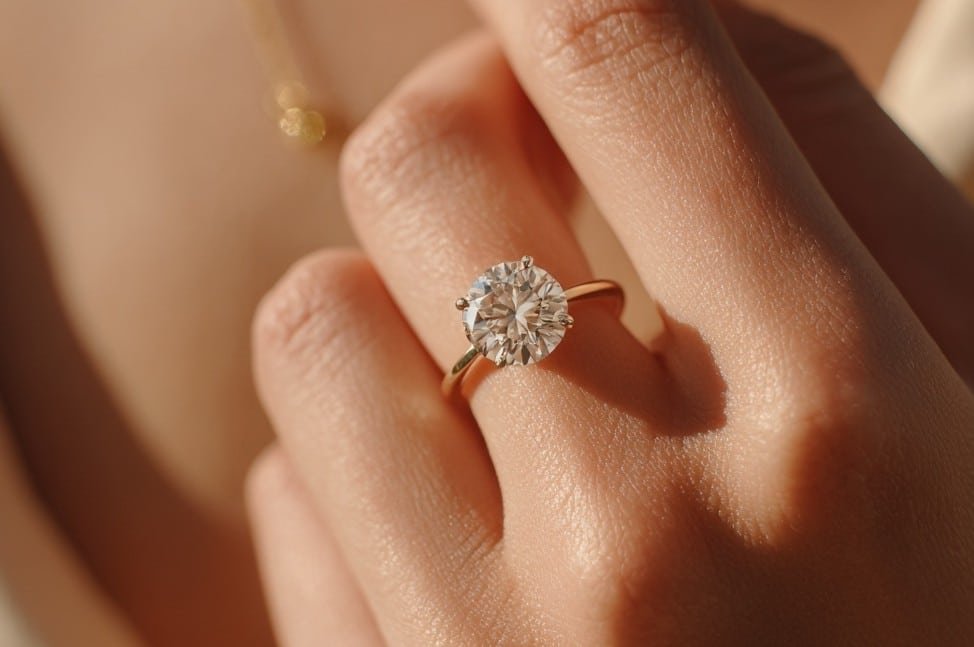
Your Ring, Your Story
Choosing an engagement ring isn’t just about diamonds or settings — it’s about emotion, meaning, and making a promise that lasts a lifetime. Whether you go big or small, custom or classic, lab-grown or vintage, what matters most is that it feels right for the two of you.
Take your time. Trust your instincts. And remember: the perfect ring isn’t just the one that shines the brightest — it’s the one that feels like home. Classroom 15x
Frequently Asked Questions About Engagement Rings
Question 1: How much should I spend on an engagement ring?
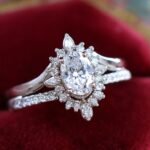
Answer 1: The average engagement ring cost ranges from $1,000 to $5,000, but the best amount to spend depends on your personal budget and values. There’s no rule — focus on choosing a high-quality ring that reflects your love and suits your lifestyle. Many couples now prioritize meaning, ethical sourcing, and craftsmanship over traditional price tags.
Question 2: What diamond shape is best for engagement rings?
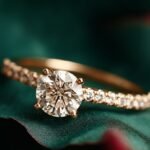
Answer 2: Round brilliant is the most popular diamond shape for engagement rings because of its unmatched sparkle and timeless elegance. Other trending choices include oval, princess, and cushion cuts — each offering a unique look and feel. Choose the diamond shape based on your partner’s personality, hand shape, and jewelry style.
Question 3: Are lab-grown diamonds real diamonds?
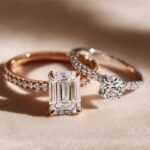
Answer 3: Yes, lab-created diamonds are real diamonds. They are chemically and physically identical to natural diamonds but are grown in controlled environments. Lab-grown diamonds are eco-friendly, conflict-free, and typically cost 30–50% less — making them a smart and ethical engagement ring option.
Question 4: What is the best metal for an engagement ring band?
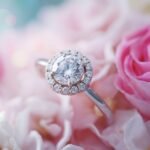
Answer 4: The best metal for engagement rings depends on lifestyle and preference. Platinum is durable and hypoallergenic, ideal for daily wear. White gold offers a similar appearance at a lower price. Yellow and rose gold provide warmth and character. Choose a metal that matches their jewelry and skin tone for the perfect fit.
Question 5: How can I find out my partner’s ring size without them knowing?
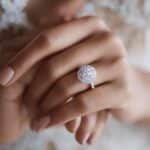
Answer 5: To secretly find your partner’s engagement ring size, borrow a ring they wear on their left ring finger and take it to a jeweler. Or, trace the inner edge on paper or use a printable ring sizer. Friends and family may also know. Most jewelers offer free resizing after the proposal if needed.
Question 6: What do the 4 Cs mean when buying a diamond?
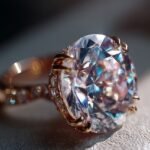
Answer 6: The 4 Cs — Cut, Color, Clarity, and Carat — are the key diamond quality factors.
Cut affects brilliance and sparkle.
Color measures the absence of yellow/brown hues.
Clarity checks for internal flaws.
Carat is the weight of the diamond.
Understanding the 4 Cs helps you choose a diamond that fits your budget and sparkles beautifully.
Question 7: How do you maintain and clean an engagement ring?

Answer 7: To maintain your engagement ring’s shine, clean it regularly using warm water, mild dish soap, and a soft toothbrush. Avoid harsh chemicals and remove the ring during workouts or chores. Schedule professional cleanings and inspections twice a year to check prongs, settings, and stone stability — it protects your investment and keeps the sparkle alive.
Top 10 Criteria for Choosing the Best Engagement Ring:
Ring style should match their personality and taste.
Metal choice must suit their skin tone and lifestyle.
Select a diamond shape that fits their hand best.
Cut quality is key for maximum brilliance and sparkle.
Carat weight should balance budget and visual impact.
Color grade should complement the setting metal.
Clarity must look clean to the naked eye.
Choose a setting that fits their daily activities.
Ensure certification from a reputable gem lab.
Stick to a budget that won’t cause financial stress.
Rating:
This simple guide covers every major decision point — from aesthetics to practicality — to help you confidently choose the engagement ring that’s not just beautiful, but perfect for them.












